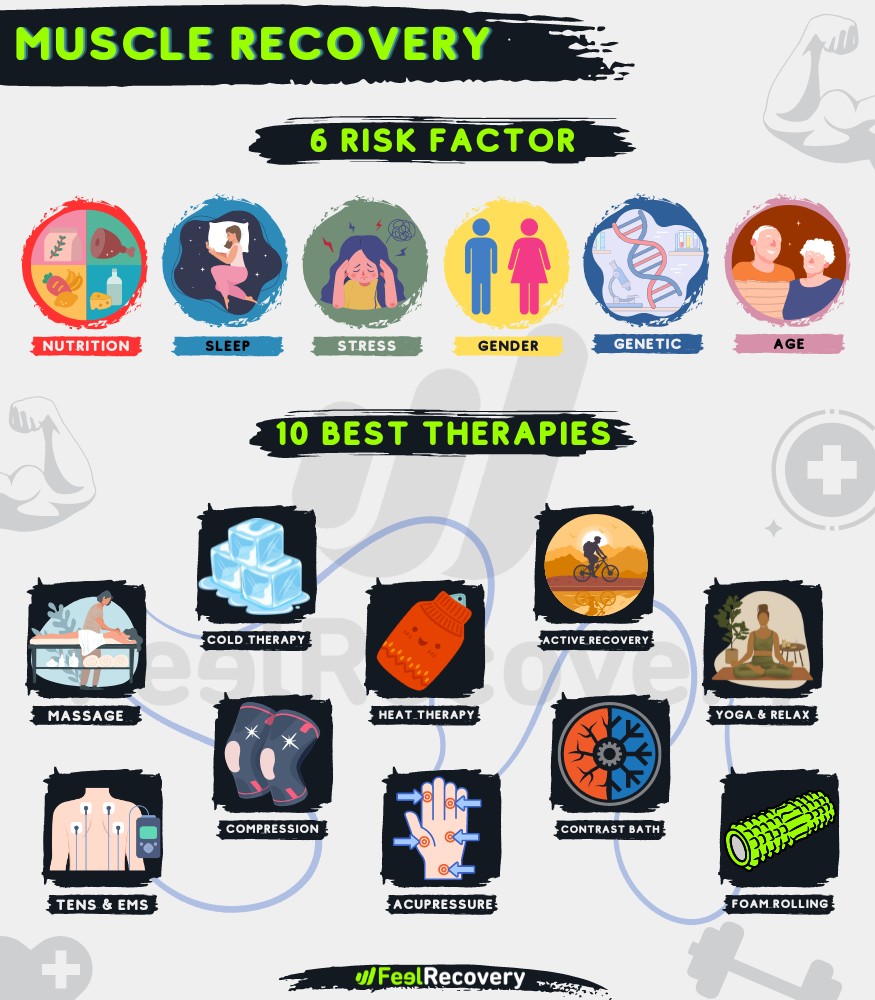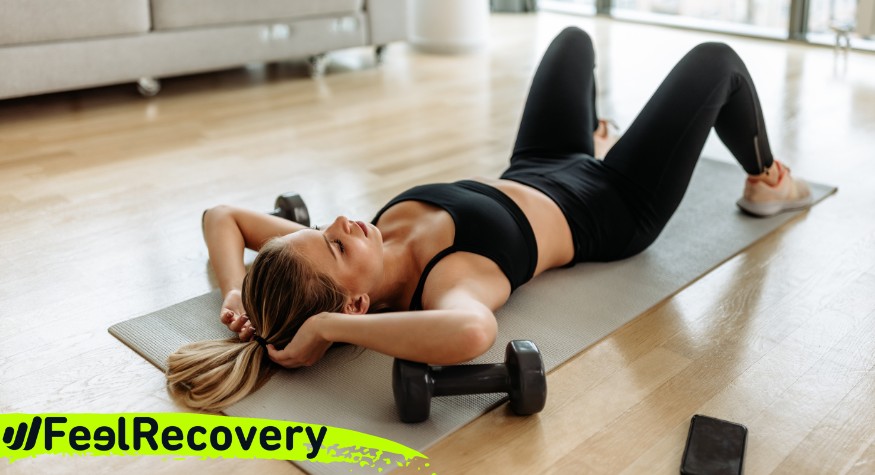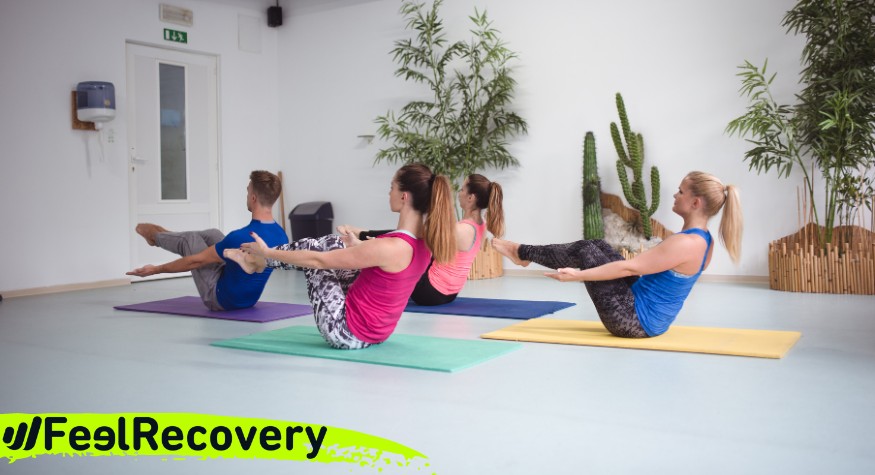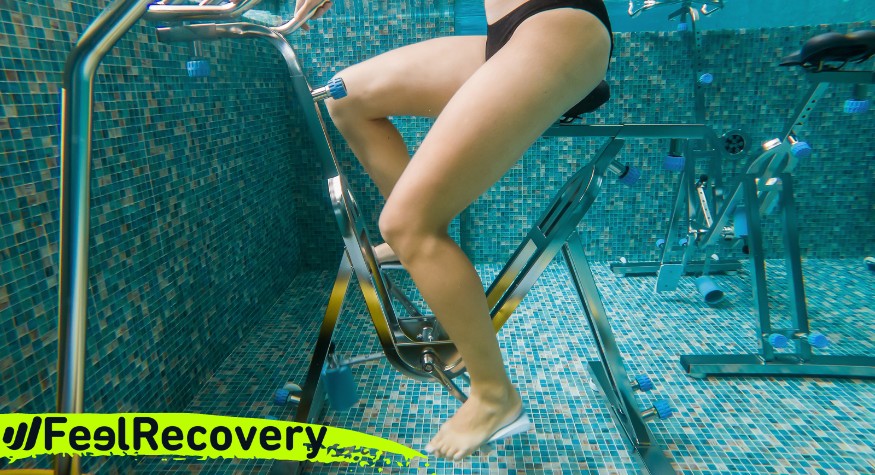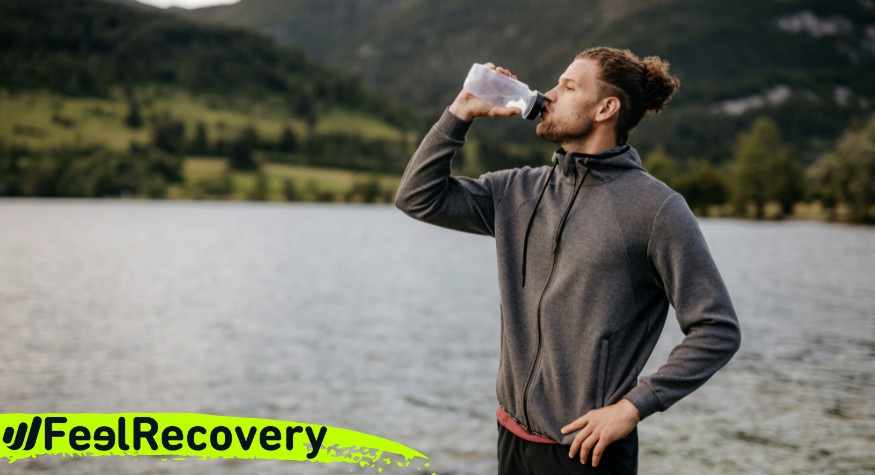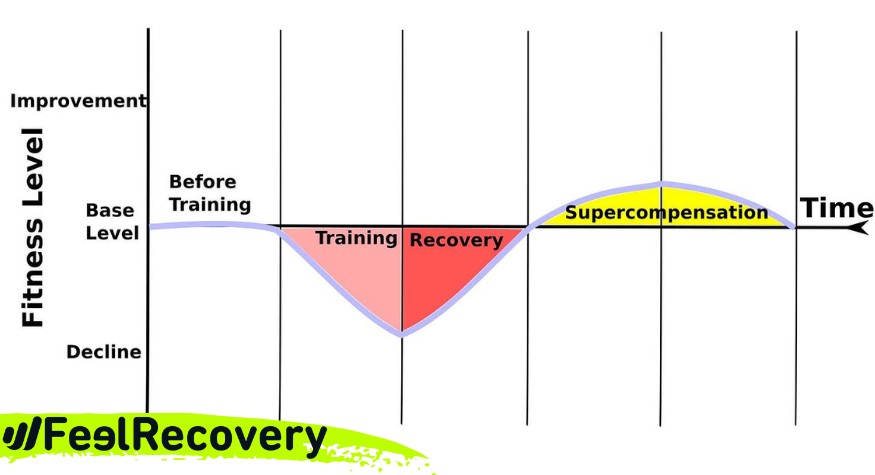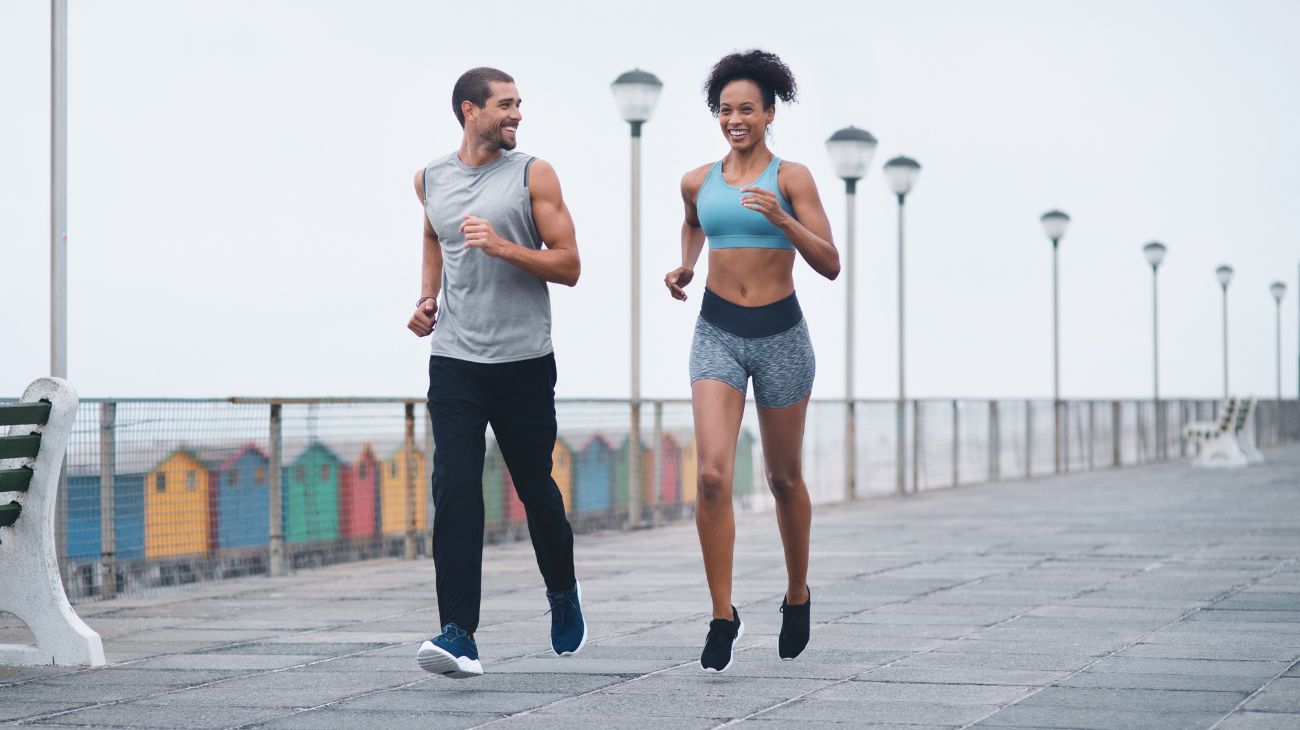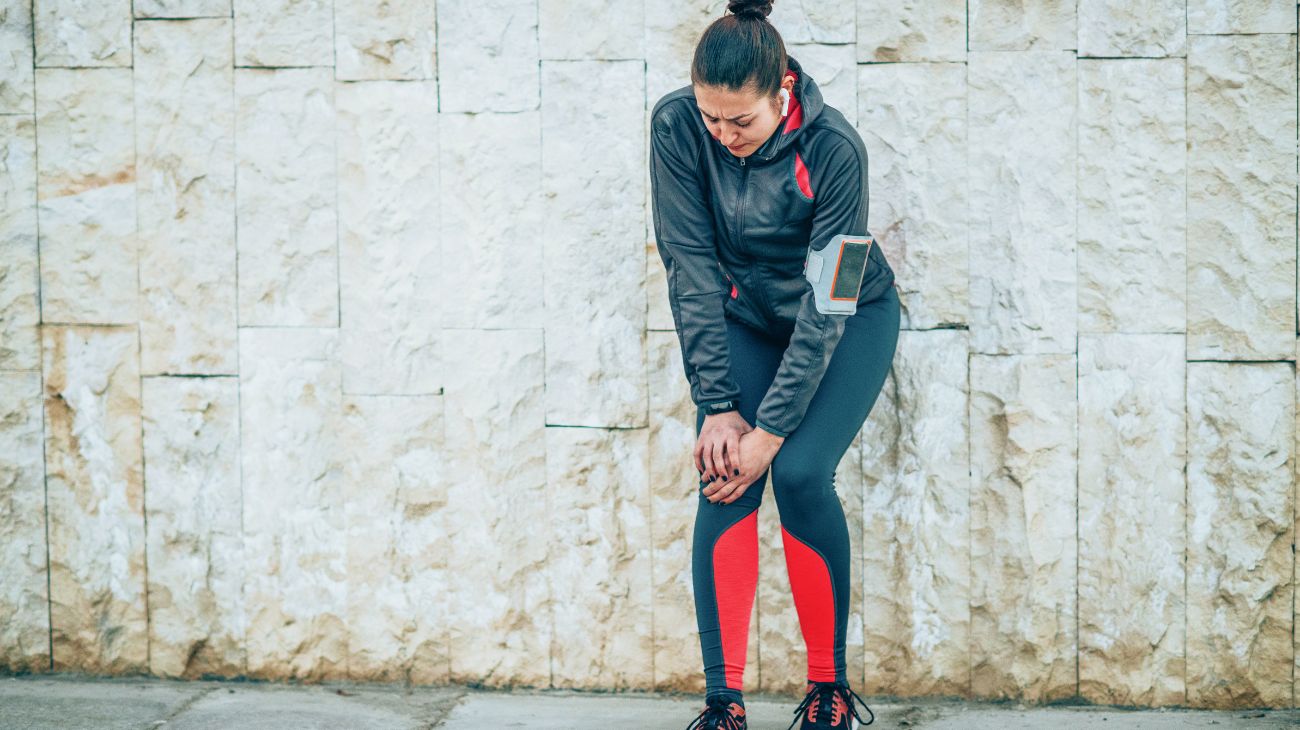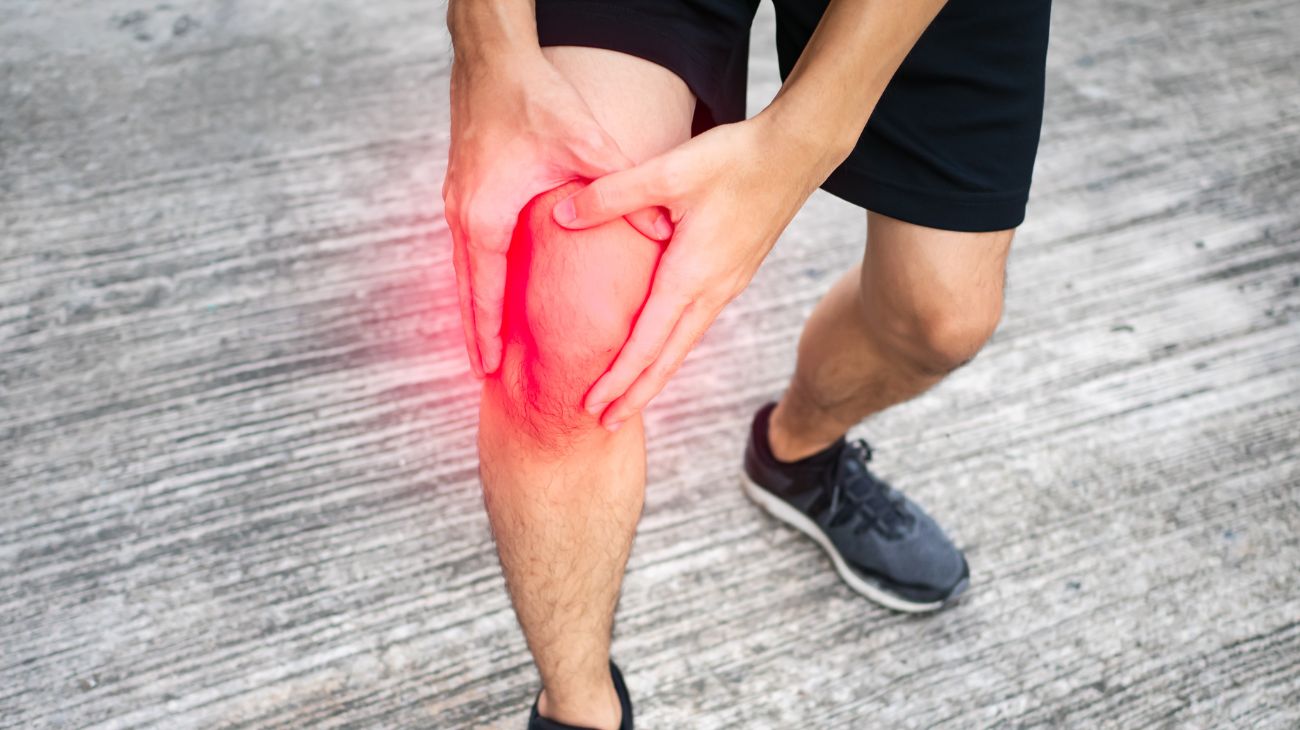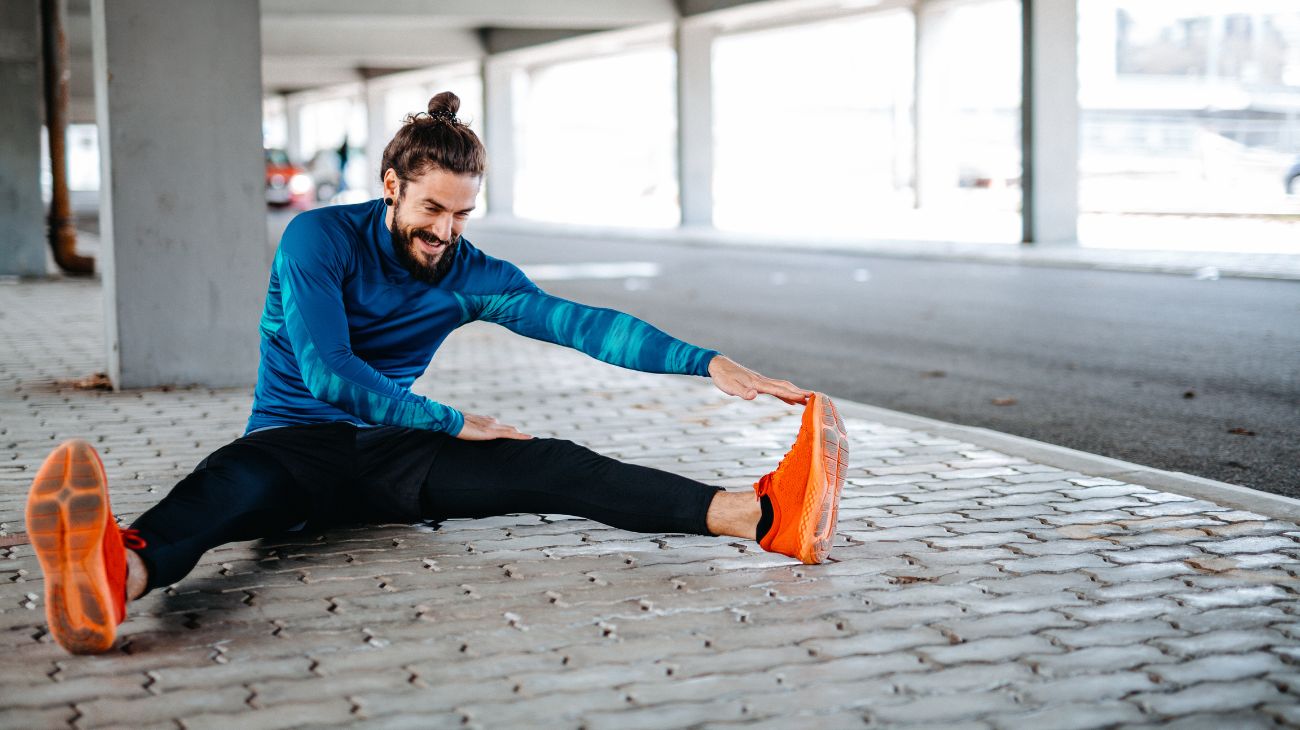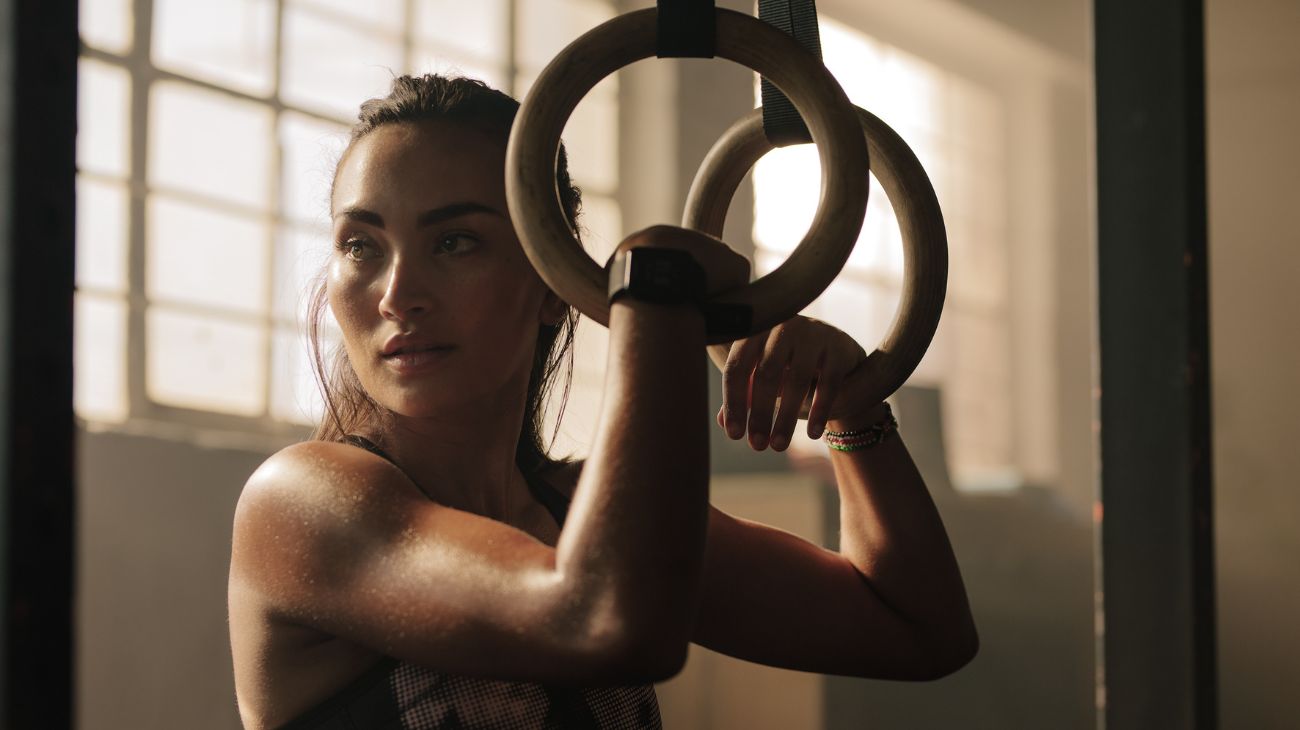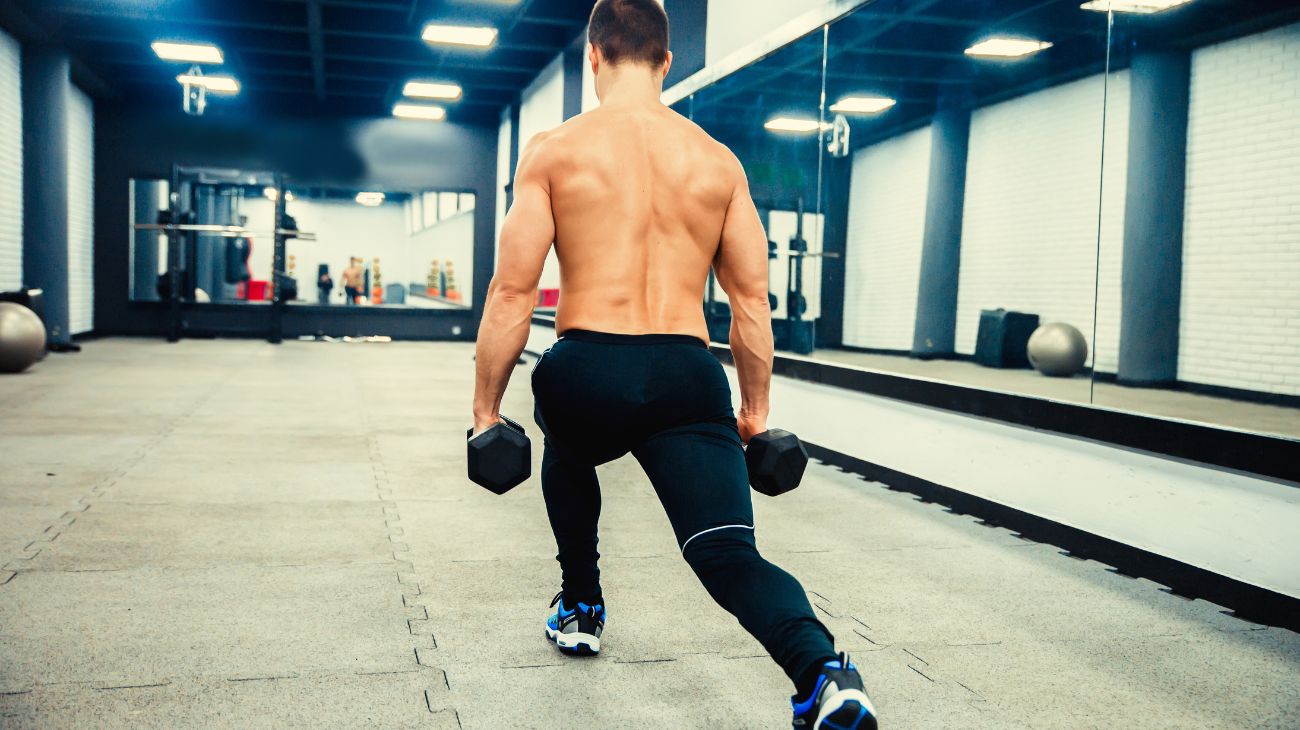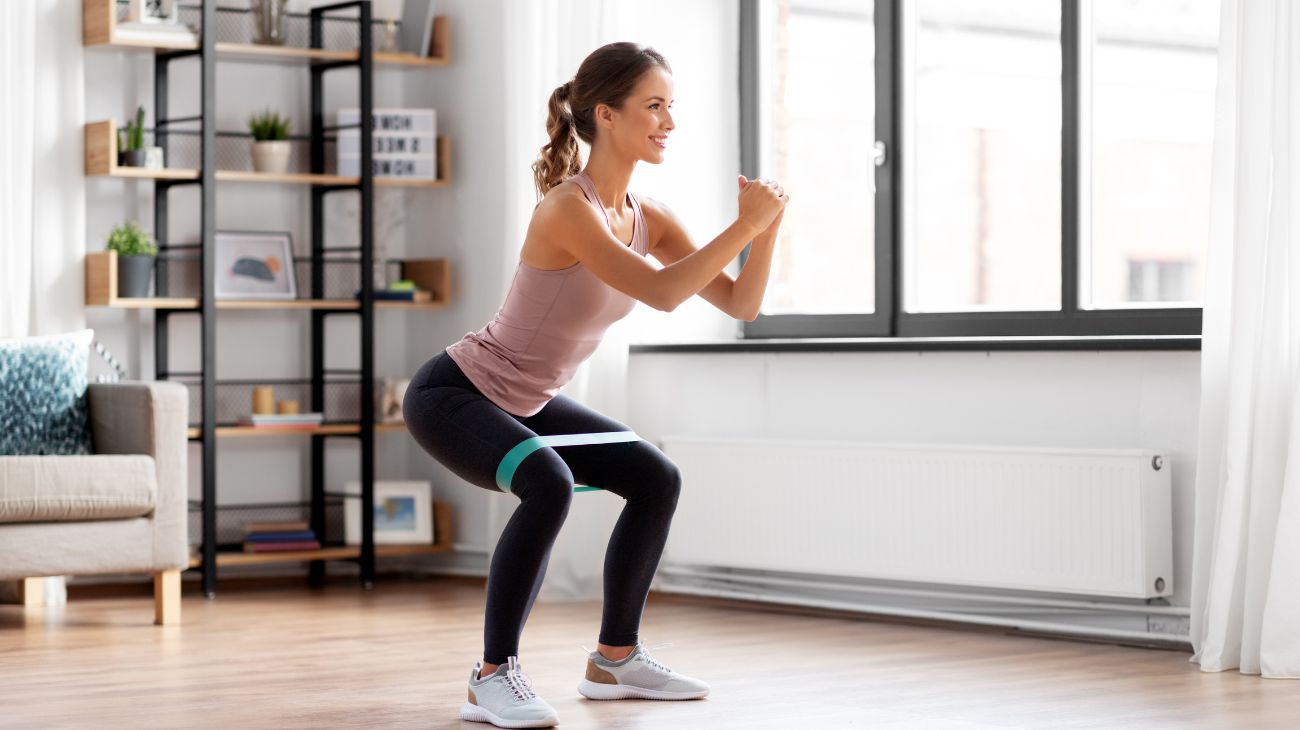- Best Post-Workout recovery products
- The importance of recovery to improve sports performance
- Types of post-workout recovery
- Benefits of Post-Workout Recovery
- Best active recovery methods
- Best passive recovery methods
- Best nutrition and hydration for Post-Workout recovery
- Sleep and rest to speed post-workout recovery
- F.A.Q: Frequently asked questions
Post-workout recovery is essential for achieving fitness goals and preventing injuries. During exercise, the body undergoes physical stress and damage to muscle fibers, resulting in inflammation and soreness. Proper recovery helps to reduce this inflammation, repair muscle fibers, and enhance muscle growth and adaptation.
Additionally, recovery can help to prevent future injuries by addressing any imbalances or weaknesses that may have been exacerbated during exercise. Neglecting recovery can lead to prolonged soreness, decreased performance, and even overuse injuries.
Best Post-Workout recovery products
bestseller
-
2 Calf Compression Sleeve (Black/Gray)
£20,95 -
2 Calf Compression Sleeve (Green/Navy)
£20,95 -
2 Calf Compression Sleeve (Pink/Bordeaux)
£20,95 -
2 Thigh Compression Sleeve (Black/Gray)
£20,95 -
2 Thigh Compression Sleeve (Green/Navy)
£20,95 -
2 Thigh Compression Sleeve (Pink/Bordeaux)
£20,95 -
Back Support Belt (Black)
£39,95 -
Back Support Belt (Green)
£39,95 -
Back Support Belt (Pink)
£39,95 -
Microwave Wheat Bag for Neck & Shoulder Pain Relief (Hearts)
£24,95 -
Microwave Wheat Bag for Neck & Shoulder Pain Relief (Oxford)
£24,95 -
Microwave Wheat Bag for Neck & Shoulder Pain Relief (Sport)
£24,95 -
Microwave Wheat Bag for Neck Pain Relief (Hearts)
£20,95 -
Microwave Wheat Bag for Neck Pain Relief (Oxford)
£20,95 -
Microwave Wheat Bag for Neck Pain Relief (Sport)
£20,95 -
Microwaveable Wheat Bag for Pain Relief (Hearts)
£20,95 -
Microwaveable Wheat Bag for Pain Relief (Oxford)
£20,95 -
Microwaveable Wheat Bag for Pain Relief (Sport)
£20,95 -
Shoulder Support Brace (Green)
£24,95
-
Foot Massage Roller for Plantar Fasciitis (Black)
£20,95 -
Foot Massage Roller for Plantar Fasciitis (Green)
£20,95 -
Foot Massage Roller for Plantar Fasciitis (Pink)
£20,95 -
Ice Massage Roller Ball (Black)
£34,95 -
Ice Massage Roller Ball (Green)
£34,95 -
Ice Massage Roller Ball (Pink)
£34,95 -
Shoulder Support Brace (Black)
£24,95 -
Shoulder Support Brace (Pink)
£24,95 -
Soft Density Foam Roller for Recovery (Black)
£34,95 -
Soft Density Foam Roller for Recovery (Green)
£34,95 -
Soft Density Foam Roller for Recovery (Pink)
£34,95 -
Sport Compression Socks (1 Pair) (Black/Gray)
£20,95 -
Sport Compression Socks (1 Pair) (Green/Navy)
£20,95 -
Sport Compression Socks (1 Pair) (Pink/Bordeaux)
£20,95
The importance of recovery to improve sports performance
Recovery is an essential component of achieving sports performance objectives. During exercise and sports, the body undergoes physical stress, leading to muscle fatigue, inflammation, and microtrauma. Proper recovery allows the body to repair and regenerate these tissues, leading to improved muscle strength, endurance, and overall performance.
Neglecting recovery can lead to prolonged soreness, decreased performance, and increased risk of injury. As a result, athletes and fitness enthusiasts should prioritize recovery strategies, such as active and passive recovery methods, rest days, and proper nutrition, to optimize their performance and reach their goals.
By allowing the body to recover and adapt to physical stress, athletes can improve their athletic abilities and achieve their performance objectives.
Key points of recovery for sports performance improvement:
- Proper nutrition and hydration
- Adequate sleep and rest
- Active recovery methods, such as low-intensity exercise or stretching
- Passive recovery methods, such as massage or foam rolling
- Rest days to allow the body to recover and regenerate
- Gradual progression of training intensity and volume
- Proper form and technique during exercise to prevent injury
- Consistency in training and recovery practices
- Addressing any imbalances or weaknesses through targeted exercises or physical therapy
- Listening to the body and adjusting training and recovery practices accordingly.
Types of post-workout recovery
Active Recovery
Active recovery is a post-workout recovery method that involves engaging in low-intensity exercise or movement to promote blood flow, reduce muscle soreness, and improve recovery. The goal of active recovery is to help the body recover more quickly and return to its pre-workout state.
Here are eight examples of active recovery:
- Walking or hiking at a moderate pace
- Light jogging or running
- Cycling or spinning at a low intensity
- Swimming or water aerobics
- Yoga or gentle stretching
- Foam rolling or self-myofascial release
- Dynamic mobility exercises
- Pilates or barre workouts at a low intensity
Active recovery can be done on rest days or as a cool-down after a workout. It is important to listen to the body and choose activities that promote recovery without causing additional stress or fatigue.
Passive Recovery
Passive recovery is a method that involves rest or low-intensity activities that do not place additional stress on the body. This type of recovery allows the body to repair and recover from exercise-induced damage without adding additional fatigue or strain.
Here are eight examples of passive recovery:
- Sleep and rest
- Massage therapy
- Contrast therapy (alternating hot and cold therapy)
- Compression therapy (using compression garments or sleeves)
- Foam rolling or self-myofascial release
- Epsom salt baths or ice baths
- Stretching or gentle yoga
- Meditation or mindfulness practices
Passive recovery can be done on rest days or in between high-intensity workouts. It is important to listen to the body and choose activities that promote recovery without causing additional stress or fatigue.
Benefits of Post-Workout Recovery
Here are best benefits of post-workout recovery:
- Improved muscle recovery and repair: Rest and recovery after exercise allows your muscles time to heal and repair any damage incurred during your workout.
- Reduced risk of injury: Taking time to recover after exercise helps to prevent overuse injuries that can occur from repeated strain on the same muscles or joints.
- Improved athletic performance: Recovery time helps to optimize muscle and joint function, allowing you to perform at your best during your next workout or competition.
- Reduced muscle soreness and inflammation: Rest and recovery help to reduce the inflammation and soreness that can occur after a strenuous workout, making it easier to resume your exercise routine.
- Improved immune system function: Exercise places stress on your immune system, and proper recovery time allows it to restore its functions and fight off infections and illnesses.
- Increased flexibility and range of motion: Rest and recovery can help to prevent muscle stiffness and improve flexibility and range of motion, allowing you to move more freely during exercise and daily activities.
- Improved mental health: Rest and recovery time can help to reduce stress and improve overall mental health, leading to a more positive outlook and better quality of life.
- Reduced risk of burnout: Taking time to recover after exercise can help to prevent burnout, allowing you to stay motivated and maintain a consistent exercise routine over time.
- Enhanced nutrient absorption: Recovery time can help to optimize nutrient absorption and utilization, allowing your body to better absorb and utilize the nutrients it needs to support muscle growth and repair.
- Improved sleep quality: Proper recovery time can help to improve sleep quality, allowing you to feel more rested and refreshed and better able to perform during your next workout or activity.
Best active recovery methods
Here are some of the best active recovery methods:
- Low-intensity cardio: Low-intensity cardio, such as walking or cycling, can help to increase blood flow and oxygen delivery to the muscles, promoting recovery and reducing soreness. Aim for 30-60 minutes of low-intensity cardio, 2-3 times per week.
- Yoga: Yoga can help to improve flexibility, reduce muscle tension, and promote relaxation. It can also help to improve joint mobility and reduce the risk of injury. Aim for a 30-60 minute yoga session, 1-2 times per week.
- Foam rolling: Foam rolling can help to release muscle tension and reduce soreness, allowing for faster recovery. It can also improve mobility and range of motion. Aim for 10-15 minutes of foam rolling, 2-3 times per week.
- Swimming: Swimming is a low-impact form of exercise that can help to increase blood flow and oxygen delivery to the muscles, promoting recovery and reducing soreness. It can also improve cardiovascular fitness. Aim for a 30-60 minute swim, 1-2 times per week.
- Active stretching: Active stretching can help to improve flexibility and reduce muscle tension, promoting recovery and reducing the risk of injury. Aim for a 15-20 minute active stretching session, 2-3 times per week.
- Resistance band exercises: Resistance band exercises can help to improve joint mobility and muscle activation, promoting recovery and reducing the risk of injury. They can also improve muscle strength and endurance. Aim for a 15-20 minute resistance band workout, 2-3 times per week.
- Pilates: Pilates can help to improve core strength and stability, as well as flexibility and joint mobility. It can also reduce muscle tension and promote relaxation. Aim for a 30-60 minute Pilates session, 1-2 times per week.
- Light weightlifting: Light weightlifting can help to improve muscle activation and promote recovery without causing excessive muscle damage. Aim for a 20-30 minute light weightlifting session, 2-3 times per week.
- Walking: Walking is a low-impact form of exercise that can help to increase blood flow and oxygen delivery to the muscles, promoting recovery and reducing soreness. It can also improve cardiovascular fitness. Aim for a 30-60 minute walk, 2-3 times per week.
- Cycling: Cycling is a low-impact form of exercise that can help to increase blood flow and oxygen delivery to the muscles, promoting recovery and reducing soreness. It can also improve cardiovascular fitness. Aim for a 30-60 minute bike ride, 1-2 times per week.
Best passive recovery methods
Here are some of the best passive recovery methods:
- Rest: Rest is one of the simplest and most effective ways to promote recovery. Simply taking time off from exercise and allowing your body to recover can help to reduce soreness, prevent injury, and improve performance.
- Sleep: Getting enough sleep is crucial for recovery, as it allows your body to repair and restore itself. Aim for 7-9 hours of sleep per night, and try to maintain a consistent sleep schedule.
- Massage: Massage can help to reduce muscle tension, improve circulation, and promote relaxation, all of which can aid in recovery. Aim for a 60-90 minute massage, 1-2 times per month.
- Hydrotherapy: Hydrotherapy, such as hot or cold water immersion, can help to reduce inflammation and promote recovery. Hot water can help to increase blood flow and relax muscles, while cold water can help to reduce inflammation and soreness. Aim for a 10-15 minute hot or cold water immersion, 2-3 times per week.
- Compression therapy: Compression therapy, such as wearing compression garments or using compression sleeves, can help to improve circulation and reduce soreness and swelling. Aim to wear compression garments for 1-2 hours per day, or during and after exercise.
- Acupuncture: Acupuncture can help to reduce muscle tension and improve circulation, promoting recovery and reducing soreness. Aim for a 30-60 minute acupuncture session, 1-2 times per month.
- Heat therapy: Heat therapy, such as using a heat pad or warm towels, can help to increase blood flow and reduce muscle tension, promoting recovery and reducing soreness. Aim for a 20-30 minute heat therapy session, 1-2 times per day.
- Cold therapy: Cold therapy, such as using an ice pack or cold towels, can help to reduce inflammation and soreness, promoting recovery. Aim for a 10-20 minute cold therapy session, 1-2 times per day.
- Nutrition: Proper nutrition, including consuming enough protein, carbohydrates, and healthy fats, is crucial for recovery. Aim to eat a balanced diet with plenty of whole foods, and consider taking supplements such as protein powder or fish oil.
- Mind-body techniques: Mind-body techniques, such as meditation, deep breathing, or visualization, can help to reduce stress and promote relaxation, aiding in recovery. Aim for a 10-20 minute mind-body practice, 1-2 times per day.
- Sauna: Saunas can be an effective method for sports recovery. The high temperature in the sauna causes the blood vessels to dilate, increasing blood flow and promoting relaxation. This can help to reduce muscle soreness and stiffness, while also providing a cardiovascular benefit.
Best nutrition and hydration for Post-Workout recovery
Nutrition and hydration are crucial for post-workout recovery for several reasons:
- Replenish energy stores: During exercise, your body uses up its glycogen stores for energy. Replenishing these stores with carbohydrates after exercise can help to ensure that you have enough energy for your next workout.
- Repair and rebuild muscle: Exercise causes muscle damage, and protein is necessary for muscle repair and rebuilding. Consuming protein after exercise can help to promote muscle recovery and growth.
- Reduce inflammation: Exercise can cause inflammation in the body, which can contribute to soreness and fatigue. Consuming anti-inflammatory foods and drinks, such as fruits, vegetables, and green tea, can help to reduce inflammation and aid in recovery.
- Replace fluids and electrolytes: Exercise causes you to lose fluids and electrolytes through sweat, and replacing these is essential for proper hydration and recovery. Drinking plenty of water and consuming electrolyte-rich foods and drinks, such as sports drinks or coconut water, can help to replenish lost fluids and electrolytes.
- Support immune function: Exercise can temporarily weaken the immune system, leaving you more susceptible to illness. Proper nutrition, including consuming plenty of fruits and vegetables, can help to support immune function and reduce the risk of illness.
Here are some of the Top 10 best foods to accelerate post-workout recovery:
- Protein-rich foods: Protein is crucial for muscle repair and rebuilding after exercise. Some examples of protein-rich foods include chicken, turkey, fish, eggs, tofu, and Greek yogurt.
- Carbohydrate-rich foods: Carbohydrates are important for replenishing glycogen stores, which provide energy for your muscles during exercise. Some examples of carbohydrate-rich foods include oatmeal, whole grain bread, brown rice, sweet potatoes, and fruit.
- Antioxidant-rich foods: Antioxidants help to reduce inflammation in the body, which can aid in recovery. Some examples of antioxidant-rich foods include berries, leafy greens, nuts, and seeds.
- Hydrating foods: Proper hydration is important for recovery, and consuming water-rich foods can help to replenish fluids. Some examples of hydrating foods include watermelon, cucumber, celery, and tomatoes.
- Healthy fats: Healthy fats, such as those found in nuts, seeds, avocado, and salmon, can help to reduce inflammation and support recovery.
- Beetroot: Beetroot juice or beetroot supplements have been shown to increase blood flow and oxygen delivery to the muscles, which can aid in recovery.
- Tart cherry juice: Tart cherry juice contains anti-inflammatory compounds that can help to reduce soreness and aid in recovery.
- Dark chocolate: Dark chocolate contains flavanols, which have been shown to improve blood flow and reduce inflammation, aiding in recovery.
- Quinoa: Quinoa is a good source of carbohydrates, protein, and antioxidants, making it a great choice for post-workout recovery.
- Green tea: Green tea contains antioxidants and anti-inflammatory compounds that can aid in recovery and reduce muscle soreness.
Incorporating these foods into your post-workout meals and snacks can help to accelerate recovery and promote muscle repair and growth.
Sleep and rest to speed post-workout recovery
Getting a good night's sleep after training is essential for recovery for several reasons:
- Muscle repair and growth: During sleep, the body releases growth hormone, which is necessary for muscle repair and growth. Without adequate sleep, the body may not have enough time to repair and rebuild muscle tissue that was damaged during exercise.
- Hormone regulation: Sleep plays a critical role in regulating hormones, including those that are involved in muscle growth and repair, such as testosterone and cortisol. Disruptions in sleep can lead to imbalances in these hormones, which can interfere with post-workout recovery.
- Reduced inflammation: Sleep is also important for reducing inflammation in the body, which is a common response to intense exercise. Chronic inflammation can interfere with the body's ability to recover from exercise and can lead to increased risk of injury.
- Energy restoration: Sleep is necessary for restoring energy levels and replenishing glycogen stores in the muscles. Without enough sleep, the body may not have enough energy to perform at its best during subsequent workouts.
Here are 5 tips to help you get the most restorative sleep after exercise:
- Stick to a consistent sleep schedule: Going to bed and waking up at the same time every day can help regulate your body's internal clock and improve the quality of your sleep.
- Create a relaxing sleep environment: Keep your bedroom cool, dark, and quiet. Remove any distractions, such as electronic devices or loud noises, that may disrupt your sleep.
- Avoid caffeine and alcohol: Consuming caffeine or alcohol can interfere with your ability to fall asleep and stay asleep. It's best to avoid these substances for several hours before bedtime.
- Incorporate relaxation techniques: Practicing relaxation techniques, such as deep breathing or meditation, before bed can help calm your mind and prepare your body for sleep.
- Take a warm bath or shower: Taking a warm bath or shower before bed can help to relax your muscles and promote a more restful sleep.
In addition to these tips, it's also important to listen to your body and give yourself adequate rest and recovery time between workouts. Avoid pushing yourself too hard, and prioritize getting enough sleep and rest to allow your body to fully recover from exercise.
F.A.Q: Frequently asked questions
References
- Cintineo, H. P., Arent, M. A., Antonio, J., & Arent, S. M. (2018). Effects of protein supplementation on performance and recovery in resistance and endurance training. Frontiers in nutrition, 83. https://www.frontiersin.org/articles/10.3389/fnut.2018.00083/full
- Afonso, J., Clemente, F. M., Nakamura, F. Y., Morouço, P., Sarmento, H., Inman, R. A., & Ramirez-Campillo, R. (2021). The effectiveness of post-exercise stretching in short-term and delayed recovery of strength, range of motion and delayed onset muscle soreness: a systematic review and meta-analysis of randomized controlled trials. Frontiers in physiology, 12, 677581. https://www.frontiersin.org/articles/10.3389/fphys.2021.677581/full
- Halson, S. L. (2013). Recovery techniques for athletes. Sports Science Exchange, 26(120), 1-6. https://secure.footprint.net/gatorade/prd/gssiweb/pdf/120_RecoveryTechniquesforAthletes-Halson_SSE.pdf
- Dupuy, O., Douzi, W., Theurot, D., Bosquet, L., & Dugué, B. (2018). An evidence-based approach for choosing post-exercise recovery techniques to reduce markers of muscle damage, soreness, fatigue, and inflammation: a systematic review with meta-analysis. Frontiers in physiology, 403. https://www.frontiersin.org/articles/10.3389/fphys.2018.00403/full
- Versey, N. G., Halson, S. L., & Dawson, B. T. (2013). Water immersion recovery for athletes: effect on exercise performance and practical recommendations. Sports medicine, 43, 1101-1130. https://link.springer.com/article/10.1007/s40279-013-0063-8
- Kellmann, M. (2010). Preventing overtraining in athletes in high‐intensity sports and stress/recovery monitoring. Scandinavian journal of medicine & science in sports, 20, 95-102. https://onlinelibrary.wiley.com/doi/full/10.1111/j.1600-0838.2010.01192.x
- Dattilo, M., Antunes, H. K. M., Medeiros, A., Neto, M. M., Souza, H. S. D., Tufik, S., & De Mello, M. T. (2011). Sleep and muscle recovery: endocrinological and molecular basis for a new and promising hypothesis. Medical hypotheses, 77(2), 220-222. https://www.sciencedirect.com/science/article/abs/pii/S0306987711001800
- Hohenauer, E., Taeymans, J., Baeyens, J. P., Clarys, P., & Clijsen, R. (2015). The effect of post-exercise cryotherapy on recovery characteristics: a systematic review and meta-analysis. PloS one, 10(9), e0139028. https://journals.plos.org/plosone/article?id=10.1371/journal.pone.0139028
- Dupont, G., Blondel, N., & Berthoin, S. (2003). Performance for short intermittent runs: active recovery vs. passive recovery. European journal of applied physiology, 89(6), 548-554. https://link.springer.com/article/10.1007/s00421-003-0834-2
- Choi, D., Cole, K. J., Goodpaster, B. H., Fink, W. J., & Costill, D. L. (1994). Effect of passive and active recovery on the resynthesis of muscle glycogen. Medicine and science in sports and exercise, 26(8), 992-996. https://europepmc.org/article/med/7968434













































































